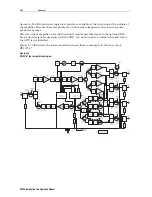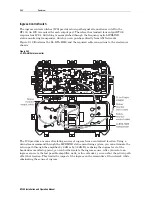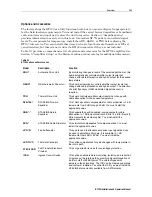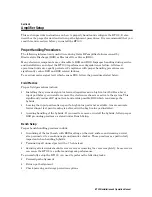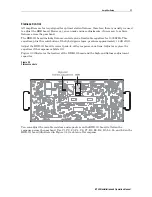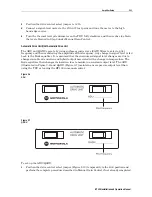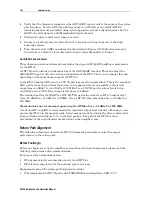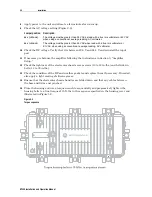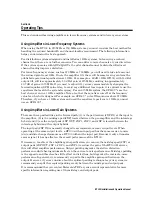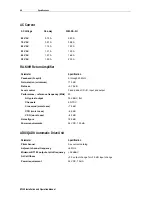
Amplifier
Setup
3-9
BT100 Installation and Operation Manual
attenuation changes due to temperature. If necessary, you can control the Bode board manually
using the potentiometer labeled manual level (
MAN
)
in Figure 2-13.
Amplifier Level Control
Signal levels vary in a cable system primarily because cable attenuation changes with
temperature. Other components such as passives and amplifier hybrids are also affected by
temperature changes. To automatically compensate for these signal level fluctuations and
control output level, you must select the optional ADU, QADU, or TDU. The use of the ADU,
QADU, or TDU is recommended for improved output level stability.
When necessary and appropriate, you can also use manual gain control. The gain of the BT100
is then determined by the potentiometer marked MAN on the electronics chassis cover.
Manual Gain Control
To use manual gain control:
1
Verify that the electronics chassis is installed correctly.
2
Ensure that there is continuity in the forward path by installing the design-value forward
equalizer and design value input JXP-*B attenuator.
3
Ensure that the drive control select jumper is in the
MAN
position.
4
Use a signal-level meter to measure the high band-edge carrier input level at the input test
point: 750 MHz = channel 116, 870 MHz = channel 136, 1003 MHz = channel 158.
This carrier should be at standard analog level, non-scrambled.
5
Verify that the input level agrees with the design specification input.
If the level is different from design, adjust accordingly. For example: the design level is
19 dBmV at the highest frequency and the design pad value is JXP-3B. If the actual
measured level is 21 dBmV, then you must change the pad to a JXP-5B.
If the actual levels are significantly different from the design levels, it is recommended that
you investigate or consult system management before proceeding.
6
Connect the signal-level meter to the output test point and tune the meter to the high-end
channel.
7
Turn the manual gain reserve (
MAN
) control (illustrated in Figure 2-13) to maximum (fully
clockwise) and then reduce the output as noted in Table 3-3 below:
Table 3-3
Gain reserve versus ambient temperature
Temperature Gain
Reserve
Above 110
°
F (43
°
C)
3 dB
32
°
F (0
°
C) to 110
°
F (43
°
C)
4 dB
Below 32
°
F (0
°
C)
5 dB
8
Check the amplifier output tilt by measuring the high band- and low band-edge carriers.
High = channel 116 (745.25 MHz), channel 136 (865.25 MHz), or channel 158
(997.25 MHz).


